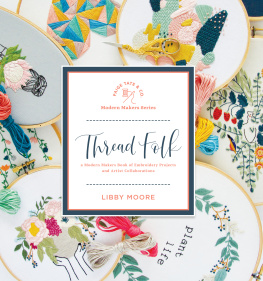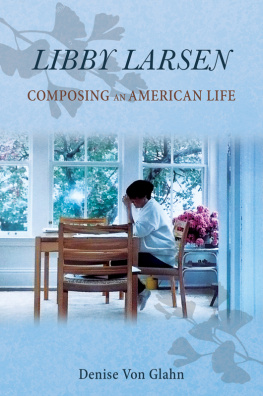Julie Tate-Libby - The Good Way
Here you can read online Julie Tate-Libby - The Good Way full text of the book (entire story) in english for free. Download pdf and epub, get meaning, cover and reviews about this ebook. year: 2019, publisher: Koehler Books, genre: Detective and thriller. Description of the work, (preface) as well as reviews are available. Best literature library LitArk.com created for fans of good reading and offers a wide selection of genres:
Romance novel
Science fiction
Adventure
Detective
Science
History
Home and family
Prose
Art
Politics
Computer
Non-fiction
Religion
Business
Children
Humor
Choose a favorite category and find really read worthwhile books. Enjoy immersion in the world of imagination, feel the emotions of the characters or learn something new for yourself, make an fascinating discovery.
- Book:The Good Way
- Author:
- Publisher:Koehler Books
- Genre:
- Year:2019
- Rating:3 / 5
- Favourites:Add to favourites
- Your mark:
- 60
- 1
- 2
- 3
- 4
- 5
The Good Way: summary, description and annotation
We offer to read an annotation, description, summary or preface (depends on what the author of the book "The Good Way" wrote himself). If you haven't found the necessary information about the book — write in the comments, we will try to find it.
The Good Way — read online for free the complete book (whole text) full work
Below is the text of the book, divided by pages. System saving the place of the last page read, allows you to conveniently read the book "The Good Way" online for free, without having to search again every time where you left off. Put a bookmark, and you can go to the page where you finished reading at any time.
Font size:
Interval:
Bookmark:

The Good Way:
A Himalayan Journey
by Julie Tate-Libby
Copyright 2019 Julie Tate-Libby
ISBN 978-1-63393-837-3
All rights reserved. No part of this publication may be reproduced, stored in a retrieval system, or transmitted in any form or by any meanselectronic, mechanical, photocopy, recording, or any otherexcept for brief quotations in printed reviews, without the prior written permission of the author.
REVIEW COPY: This is an advanced printing subject to corrections and revisions.
Published by

210 60th Street
Virginia Beach, VA 23451
800-435-4811
www.koehlerbooks.com
THE GOOD WAY:
A Himalayan Journey
Julie Tate-Libby

For Mom, Dad, and Jen
CHAPTER ONE

Andhra Pradesh, India: 1994
IT WAS THE SCENT that I fell in love with firstthe thick, hot rotting scent of human flesh and waste mixed with jasmine and red clay. It pervaded everything. It was the first thing to hit me, walking off the airplane on the tarmac under a blazing blue sky. Even as we left Delhi by train, it remained with me. Through Agra and Jaipur and the dark, rainy jungles of Bhopal and Indore, the scent carried me along. When I woke at night, unable to remember where I was, it brought me back to the rattling train. It followed me over hills and valleys until I arrived in the flat expanse of Southern India. From here we would begin our mission.
I couldnt shake the odor. It clung to my skin and leached into my hair. I could almost taste it, as if it had become a part of me. As I drifted in and out of sleep on the foam mats under the pink mosquito netting, it remained in my dreamsalways, always, the cloying scent of flesh and waste and sweetness. Months later, no matter how many times I washed my clothes, that curious smell followed me. Many times, I pressed my skirt to my face and breathed in the aroma of India and the summer that changed my life.
I was seventeen that summer. Old enough to disagree. Old enough to wonder what we were trying to accomplish. India fascinated me. I loved the women with their bright saris and the tiny babies with dark eyes and tattooed hands. I loved the mud huts and red-clay roads, the villagers and the fishermen with their wooden boats. But what were we doing to them? When I first signed up for the trip, it seemed like the thing to do if you were seventeen and wanted to see the world. Missionaries were the only people I knew who traveled. My family attended a Nazarene church, and in our circles, no one journeyed far from home except for a second cousin. She was a missionary in Chad, Africa. She visited us once when I was about seven. The woman towered over me. She was so tall she had to duck as she entered a room. When she smiled, her big teeth flashed in her pale face. She wore purple African dresses with hand-carved wooden beads made by the women she worked with. Id never met anyone like her. She was the most exotic person Id ever seen. One night at church, she shared her slides with us. We watched as African children ate mealie meal from big round pots and attended a school she had started. Later, someone passed around an offering to support her work in Africa. After her visit, I daydreamed for hours about going to far-off countries. I, too, wanted to do good things like feeding orphans or teaching children.
On a snowy New Years Day at my grandmothers house, I found a brochure on Teen Missions, an organization that took teens all over the world to spread the Good News . Maybe this was my calling. Maybe I could go to India and help those poor people.
In India, our days began at four in the morning. We were required to do personal Bible study, an hour of contemplative prayer and reading before breakfast. Stumbling through the darkness, with my Bible and journal clutched to my chest, I would climb to the rooftop to be alone with my thoughts. From there, I would look out over the landscape. It was quiet before the sunrise. No children crying in the distance, no donkeys braying. Only the occasional rooster broke the stillness. Before me, the desert stretched away flat and still, a drab gray-brown covered with scattered thorn bushes. In the gray light, I could just make out ragged clothes strewn over the bushes to dry. I sat with my legs crossed, looking at the pale eggshell-blue sky. The sun broke like water, spilling over the flat horizon, until it bounced up, hot and unforgivinga bright bold eye in the middle of the sky.
Rules governed our daily activities. They governed our lives. Do not walk outside the compound. Do not eat, write, read, or pray unless permitted to do so. No close friendships. No pairing off in small groups. Boot laces to be strapped. All thirteen hooks crossed and tied. No conversing with the locals without proper supervision. On our daily trips to the villages, we were told what to say and to whom, what to wear and how, what to eat and when. How to think.
After breakfast, we climbed into an old army truck with a blue canvas cover. We sat in the back on two wooden planks, facing each other as the truck coughed to life, spewing diesel fumes and dust. The planks slammed against our bottoms. I liked watching the landscape disappear behind me. The roar of the truck made talking impossible. It was peaceful jolting along, waiting for the next village.
In the villages, huts made of mud and thatch lined the narrow streets. The villagers painted white chalk symbols in the dirt in front of their doorways to ward off evil spirits. The missionary leaders told us the signs were demonic. Some of the team members prayed for the villagers and their backward ways. I thought the symbols were beautiful. But I didnt say so.
The women stood in their doorways and stared at us missionaries. Babies coughed and cried on their hips. Orange saris covered their long dark hair. As I passed, they pulled their saris over their mouths and noses. Were they shy? Embarrassed? Some days, we were told to leave and go away. Some days, we stayed.
We rode in silence across that hot desert, and every day that unforgiving sun climbed higher and higher into the sky.

Our main goal was to convert the villagers to Christianity. We were supposed to be spreading the Word of God, like a farmer casting his seeds. We didnt know which seed might take root and find its way into someones heart. I was never sure how a bunch of teenagers from the United States, who didnt speak the language, could convert someone. I wasnt even sure what that meant. But we persevered.
We spent most of our time performing skits. We worked hard on them. We staged them wearing black pants and purple T-shirts. Tape recorded music blared from an old cassette player on the back of the truck. With our hair pinned back and our faces painted white, we looked like professional street performers. Women gathered around, laughing and giggling, tucking their saris around their waists as their children hugged their legs. Silently, we acted out the story of creation, the crucifixion, Judass betrayal, the Last Supper, and other Bible stories. Under that thick, oily white paint, my cheeks burned. I was a fraud. I didnt belong here, and I knew it. I felt sick with shame.
Font size:
Interval:
Bookmark:
Similar books «The Good Way»
Look at similar books to The Good Way. We have selected literature similar in name and meaning in the hope of providing readers with more options to find new, interesting, not yet read works.
Discussion, reviews of the book The Good Way and just readers' own opinions. Leave your comments, write what you think about the work, its meaning or the main characters. Specify what exactly you liked and what you didn't like, and why you think so.












